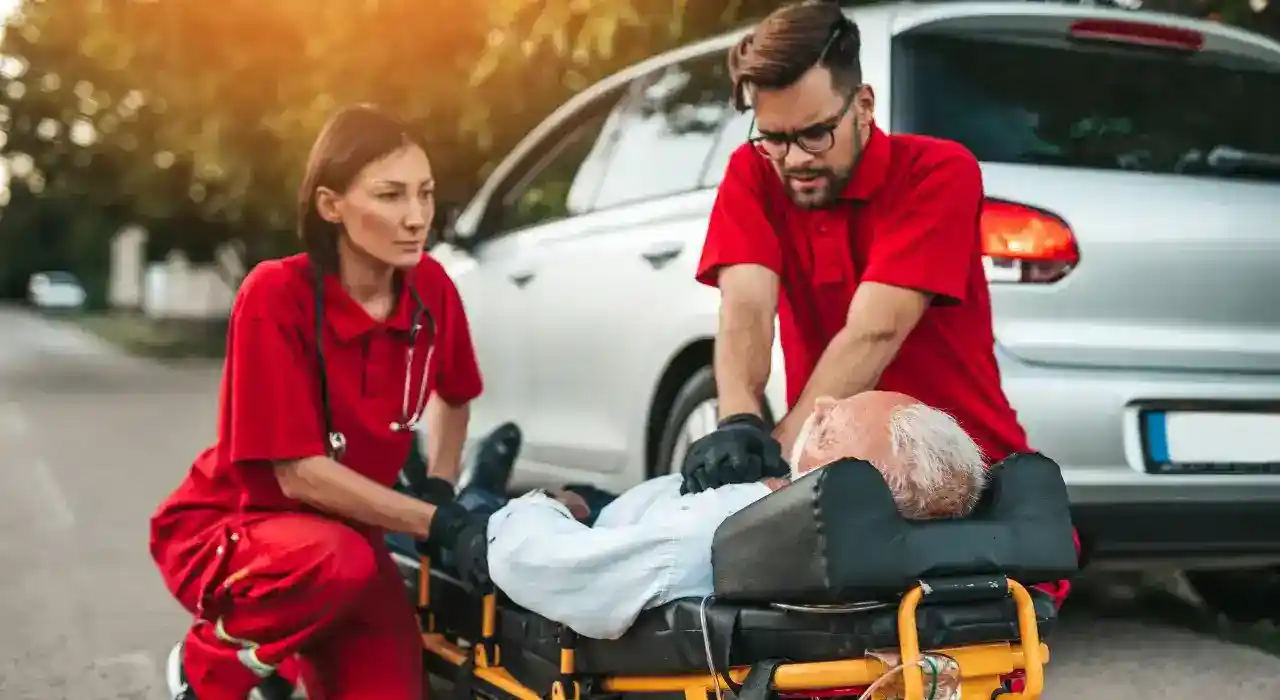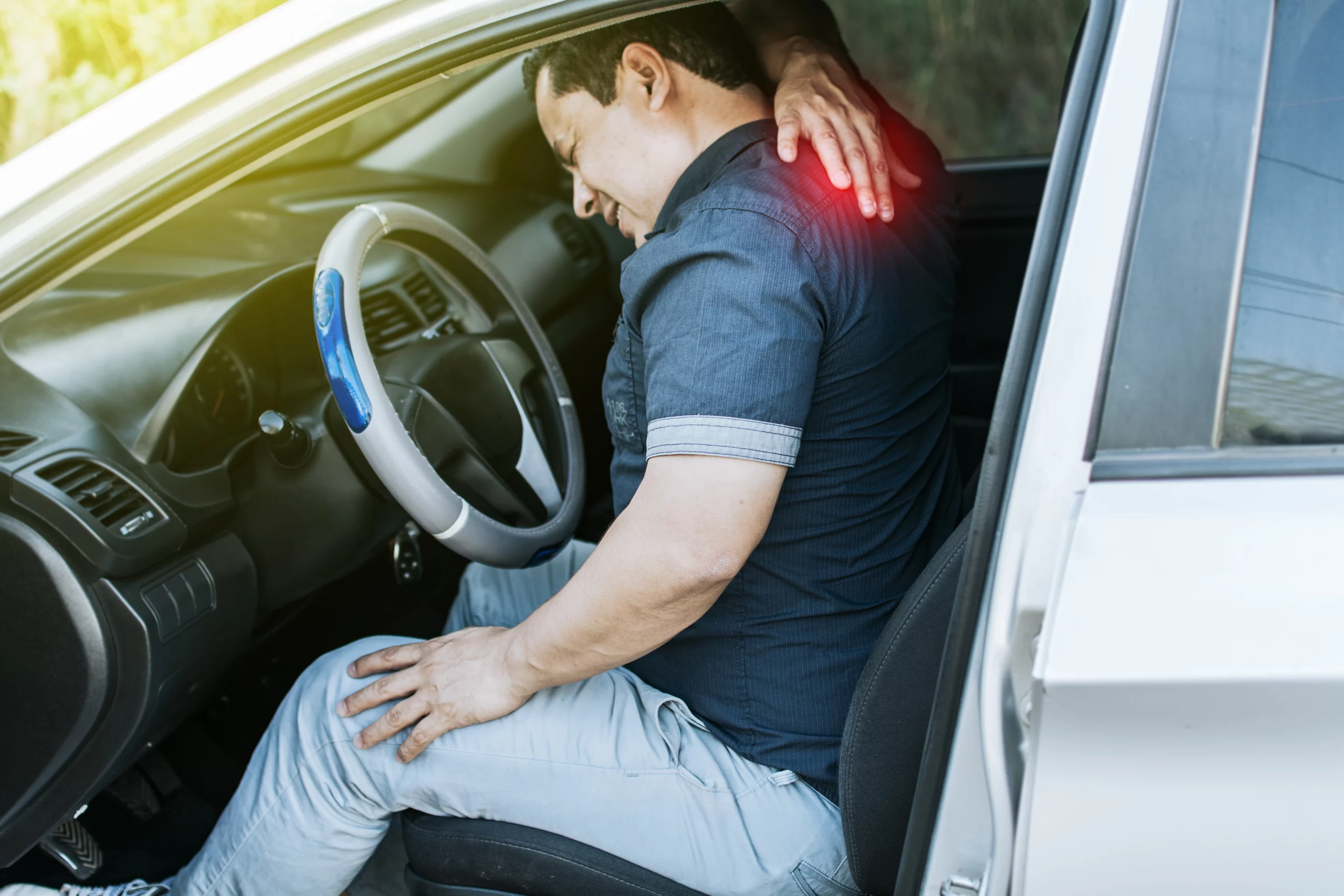Quality care for accident injuries. Our goal is to provide the best pain management and injury recovery treatment possible with a focus on biomechanics. Our staff has completed specialized training in biomechanics, which allows them to accurately diagnose injury and design an individualized treatment plan that best meets the individual patient’s needs. We understand and manage the underlying medical and psychosocial conditions that are often ignored but have a massive impact on outcomes.
Car Accidents
In 2020, around 4.8 million people were seriously injured in motor vehicle accidents. (National Transportation Safety Administration) with an estimated cost exceeding $474 billion. (NSC) In 2021, close to 43,000 people died in automobile accidents, a 10.5% increase over 2020. (Administrative Agency for Highway Safety)
The average economic cost of a fatal auto accident (including wage losses, hospital fees, administrative expenses, motor vehicle damage, and employers’ uninsured costs) in 2020 was $1,750,000, while the average economic cost of a debilitating injury was $101,000. (NSC). In 2020, occupants of passenger cars accounted for 62% of crash fatalities, compared to 17% of pedestrians, 14% of motorcyclists, 2% of cyclists, and 2% of occupants of large trucks. Insurance Institute for Highway Safety.
The fatality rate per 100,000 kilometers driven increased by 21% between 2019 and 2020, marking the highest significant annual increase since records began in 1975.
Biomechanics
Biomechanics is how human body components interact with mechanical forces during an accident to cause injury. It examines how external and internal stresses affect the human body, creating movement or distortion. Muscles, tendons, ligaments, joints, soft tissues, and bones are studied in biomechanics. The Insurance Research Council (IRC) analyzes more than 70,000 motor vehicle collision injury claims from 32 insurance firms.
-56-66% of diagnoses are neck strains/sprains
-49-56% back strains/sprains, 10-14% shoulder problems
-8-9% knee disorders
The biomechanics of automobile accident injuries can be intricate and diverse. Understanding these systems can aid in the improvement of vehicle safety measures and the comprehension and treatment of injuries incurred in automobile collisions.
In automobile collisions, persons may be exposed to various forces that might result in severe injuries. These forces may comprise uniaxial loading and multiaxial loading. – Consequently, incidents that occur at slow speeds, often less than 20 km/h can nevertheless result in severe injuries despite the lesser forces involved.
Common injuries resulting from automobile collisions include:
Whiplash is a common injury that can result from a low-speed collision. It is caused by the fast movement of the head and neck back and forth, which can strain or tear the neck’s muscles and ligaments. Even low-velocity collisions can also result in head injuries, including concussions and skull fractures.
Accidents at low speeds can cause chest injuries, including shattered ribs and internal hemorrhage. Abdominal injuries: Abdominal injuries, such as organ rupture and internal hemorrhage, are also possible in low-speed collisions. Back and spinal injuries: Low-velocity collisions can cause back and spinal injuries, including sprains, strains, and fractures.
Whiplash is defined as “an acceleration–deceleration process of energy transfer to the neck that may result from rear-end or side contact, most commonly in motor vehicle accidents, and other mishaps.” The energy transfer may cause bone or soft tissue damage (whiplash injury), which may lead to a wide range of clinical symptoms (whiplash-associated illnesses) (Cassidy et al. 1995, p. 22).
Within 75 ms of impact, simultaneous upper cervical flexion and lower cervical extension produce an S-shaped neck curvature (figure 8.17), which ultimately gives way to a C-shaped hyperextension curvature (Grauer et al. 1997). These movements put the lower and higher cervical spines at danger of injury from the rear-impact mechanism (Panjabi, Pearson et al. 2004).

The hyperextension model is insufficient in capturing the complicated motion of the cervical spine during whiplash, as it is overly simplified. Modern study on whiplash has revealed that it is not a cantilever movement, i.e., an extension–flexion movement of the head, as was popularly assumed in the past. Less than 150 milliseconds after impact, the cervical spine is compressed. During this time, the cervical spine buckles; the upper cervical segments flex and the lower cervical segments lengthen around improperly positioned axes of rotation (Bogduk and Yoganandan 2001, p. 272).
Whiplash may appear to be a straightforward harm mechanism. However, “in a particular accident there is likely to be a complex interaction between different forces depending on the speed and direction of the impact and the head and neck position” (Barnsley et al. 1994, p. 288). In addition to the cervical musculature, spinous ligaments, intervertebral discs, vertebral bodies, and facet (zygapophyseal) joints, the brain and temporomandibular joint may also be involved (e.g., Davis 2000; Ito et al. 2004; Panjabi, Ito et al. 2004; Pearson et al. 2004). In figure 8.18, many mechanisms and potential damage sites are depicted. Clinical and psychosocial symptoms can be connected with whiplash-related illnesses (Eck et al. 2001).

Potential mechanisms and injury sites for whiplash-related injuries. Shear forces affecting a spinal motion segment.
(a) Translation of the superior vertebral body anteriorly relative to the inferior body, which stresses the articular surfaces of the zygapophyseal joint (A), the anterior annulus fibrosus (B), and the zygapophyseal joint capsule (C).
“(b) Translation of the superior vertebral body posteriorly relative to the inferior body, which stresses the intervertebral disc (D) and the zygapophyseal joint capsules (E).” (“Whiplash-related injuries – Human Kinetics Canada”)
(c) Common lesions affecting the cervical spine following whiplash injury. A, articular pillar fracture; B, hemarthrosis (hemorrhage into a joint) of the zygapophyseal joint; C, rupture or tear of the zygapophyseal joint capsule; D, fracture of the subchondral plate; E, contusion of the intra-articular meniscus of the zygapophyseal joint; F, fracture involving the articular surface; G, tear of the annulus fibrosus; H, tear of the anterior longitudinal ligament; I, end-plate avulsion fracture; J, vertebral body fracture.
“Whiplash is categorized into five grades (Pastakia and Kumar 2011):” (“Whiplash-related injuries – Human Kinetics”)
- No neck pain, stiffness, or physical signs
- Complaints of neck pain with stiffness or tenderness but no physical signs noted
- Neck pain and stiffness complaints with decreased range of motion and point tenderness
- Neck pain and stiffness complaints with neurological signs
- Neck pain and stiffness complaints with fracture, dislocation, or spinal cord injury
Rear-end crashes are distinctive.
Most neck injuries occur at modest speeds, decreasing over 20 km/h. Injury is caused by seatback and differential motion. Recent research shows that facet joints clash as the neck bends and expands. Biphasic motion, when the normal spinal curves flatten as the torso sinks into the seat cushion, is associated to lumbar and thoracic spine problems. (“Biomechanics: a primer for motor vehicle collision injuries”) The dorsolumbar spine elongates early in collision.
Frontal crashes: features
In frontal collisions, the occupant slides forward with the car (inertia). Many injuries involve the car’s interior, seatbelts, airbags, and steering wheel. Higher-speed crashes frequently cause contusions, lacerations, abrasions, fractures, and organ damage. Spine and limb strains are still prevalent but require bigger delta-Vs than rear or side strikes. Airbags can cause cuts, burns, and fractures. Steering wheels in cars without airbags can cause chest and abdominal injuries.
Side crashes
Direct bullet contact and loading can result from lateral strikes. Only 10-12 inches separate a person’s torso from the bullet car’s door and front. Head, shoulder, extremity, torso, and pelvic injuries can result from door intrusion or bullet car strikes. Side airbags help decrease significant injuries for adults, but children may suffer more severe injuries depending on their sitting posture and physical features.
Impacts
When an initial motor vehicle incident is followed by a second collision with another vehicle or structure, the occupant may be in a less-than-optimal seating position. After a rear-end collision, the occupant’s head is near the airbag ejection port when it deploys. Airbag deployment near the port may cause severe injuries.
Occupant issues
Personal preferences and physical attributes determine how drivers and passengers situate themselves in the car. Some choose a forward, backward, vertical, or horizontal seat to alter body-to-vehicle distance. Some sit with their legs crossed, forward, or apart, varying their proximity to side and front vehicle structures. Nobody’s seatbelt fits properly. Minor occupants’ shoulder harnesses may be positioned toward the neck, causing cervical spine loading. Arm positions on and off the wheel and in various postures can cause arm and shoulder injuries and more severe injuries with airbag deployments. Reaching for something in the backseat can cause shoulder injury. High-heeled shoes lower the ankle, causing foot injuries.
Out-of-position occupants may suffer more serious injuries. If a driver has their head inclined to the left to see incoming traffic and is rear-ended, the neck ligaments will be pre-tensed, causing cervical spine strain. If an occupant leans forward, there will be a larger gap behind their back, resulting in higher acceleration levels in rear accidents. In frontal crashes, the person’s head may be next to the dash, increasing the risk of head damage. Variable collision tolerance is documented. Age, stature, weight, and health affect injury risk and severity. Degenerative musculoskeletal diseases, autoimmune disorders, past injuries, prior surgeries, diabetes, and other factors lower the damage threshold and may hinder healing.
Vehicle motion determines occupant movements biomechanically. Police report, if possible. If the incident is recent, take photos of the scene and affected automobiles. Suppose mid-1990s Fords and Chevrolets are involved. The attorney may be able to retrieve data from the “Black Box” to assess impact speeds and length. If the automobile crashes again or if the download is delayed while driving, the data may be lost. In an ideal situation, objective injury-proof requires photographing a patients abrasion, lacerations, swelling, and bruises before they dissipate. Focus is generally on what happened during and after the incident, occupant placement, airbag deployments, contact areas, and bruising, discoloration, and lacerations. This data and biomechanical expertise determine occupant kinematics, contact points, acceleration levels, and loading forces.
Many biomechanical tolerance tests were performed before MRI scans and improved imaging technology were available, with many reference sources relying on outdated human tolerance thresholds for bodily parts, such as 1986’s SAE J885. Soft tissue and brain injuries may require extra testing consistent with current available technologies and enhanced understanding of pain generators and comorbidities which maintain pain. In addition to the immediate injuries that can result from a car collision, there can also be long-term health effects. These can include persistent pain, psychological side effects, disability, and a decline in life quality.
Even if they do not believe they have received major injuries, persons who have been involved in an automobile accident must seek medical assistance immediately. Some injuries, such as head trauma and internal bleeding, may not be immediately visible, but if left untreated, they can be fatal.
For more detailed information on multiaxial loading and its effects: (see “Whiplash-related injuries – Human Kinetics”)
Multiaxial loading uses the same stress and strain concepts just discussed and extends them into two- and three-dimensional space. Although the biaxial and triaxial responses are illustrated for tensile loading only, the concepts are equally applicable to compressive loading and to force vectors with reversed orientation. The following formulations are for linearly elastic materials.

material biaxially. (b) Elongation caused by Fx and the resulting perpendicular contraction in the Y and Z directions. Dashed lines indicate conformation prior to loading. Solid lines indicate conformation while loaded. Biaxial (Two-Dimensional) Loading Responses Consider a three-dimensional body (figure 3.29) with sides of length X′, Y′, and Z′ that is subjected to axial forces Fx and Fy. The stresses produced in the X and Y directions are as follows:

The X-direction stress (σx) will, according to Poisson’s effect, cause deformation in all three directions. Elongation in the X direction and contraction in the Y and Z directions are shown in figure 3.29b. By applying equations 3.34 and 3.35, we obtain X- and Y-direction strains attributable to σx:

We similarly obtain Y- and X-direction strains attributable to σy:

To obtain the combined effect of σx and σy, we add the strain effects just calculated. The net strains in the X and Y directions are then

We have presented two normal stresses, σx and σy. As previously described, a tangential, or shear, stress (τ) is also created. In the case of biaxial loading, shear stress (τxy) is created as shown in figure 3.30a.

FIGURE 3.30 Shear stresses in response to biaxial and triaxial loading. (a) Shear stress (τxy) created by biaxial loading. Because of equilibrium conditions, τxy = τyx. (b) Triaxial tensile stresses (σx, σy, σz), shown as solid vectors, result in shear stresses (τxy, τyz, τzx), depicted as broken-line vectors. Equilibrium constraints dictate that τxy = τyx, τyz = τzy, and τzx = τxz.

FIGURE 3.31 Triaxial loading. Applied forces in the X, Y, and Z directions (Fx, Fy, and Fz, respectively) load the material triaxially.
Triaxial (Three-Dimensional) Loading Responses The addition of a third axial force in the Z direction complicates the conceptual model only slightly, whereas the mathematical aspects of the model become quite involved. Focusing on the conceptual application (figure 3.31), we now have
- Fx, which creates σx = Fx/(y′ · z′) and produces elongation in the X direction and contraction in the Y and Z directions
- Fy, which creates σy = Fy/(x′ · z′) and produces elongation in the Y direction and contraction in the X and Z directions
- Fz, which creates σz = Fz/(x′ · y′) and produces elongation in the Z direction and contraction in the X and Y directions
The equations for resultant strains seen in triaxial loading are

The shear stresses (τxy, τyz, τzx) produced in triaxial loading are shown in figure 3.30b.
By Gurpreet Singh Padda, MD, MBA, MHP






